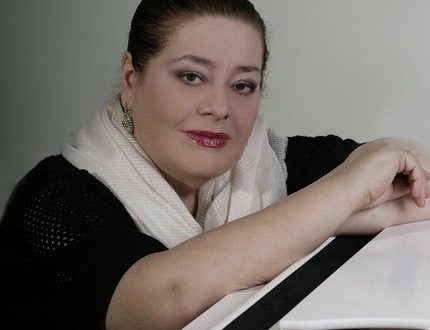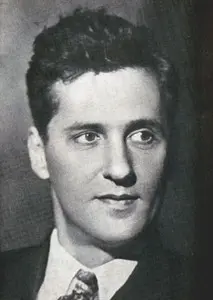
Gleb Axelrod |
Gleb Axelrod

Once Gleb Axelrod remarked: “The most complex work can be conveyed to any audience if it is done sincerely, with full dedication and clearly.” These words largely contain the artistic credo of the artist. At the same time, they seem to highlight not only the formal affiliation, but also the fundamental commitment of this master to the fundamental foundations of the Ginzburg pianistic school.
Like many of his other colleagues, Axelrod’s path to the big concert stage lay through the “competitive purgatory”. Three times he entered into pianistic battles and three times returned to his homeland with the laurels of the laureate .. At the Prague competition named after Smetana in 1951, he was awarded the first prize; this was followed by international competitions named after M. Long – J. Thibault in Paris (1955, fourth prize) and the name of Vian da Mota in Lisbon (1957, second prize). Axelrod prepared for all these competitions under the guidance of G. R. Ginzburg. In the class of this remarkable teacher, he graduated from the Moscow Conservatory in 1948, and by 1951 completed his postgraduate course. Since 1959, Axelrod himself began to teach; in 1979 he was awarded the title of professor.
Akselrod’s concert experience (and he performs both in our country and abroad) has been around forty years. During this time, of course, a very definite artistic image of the artist has developed, which is primarily characterized by excellent skill, clarity of performing intentions. In one of the reviews, A. Gottlieb wrote: “G. Axelrod immediately wins the listener’s trust with his conviction, the inner calmness of a person who knows what he is striving for. His performance, traditional in the best sense, is based on the thoughtful study of the text and its interpretation by our best masters. He combines the monumentality of the overall composition with careful finishing of details, bright contrast with subtlety and lightness of sound. The pianist has good taste and a noble manner.” Let’s add to this one more characteristic from the magazine “Soviet Music”: “Gleb Axelrod is a virtuoso, very similar in type to Carlo Cecchi … the same brilliance and ease in passages, the same endurance in large technique, the same pressure of temperament. Axelrod’s art is cheerful in tone, bright in colors.
All this to some extent determines the range of repertory inclinations of the artist. Of course, in his programs there are “strongholds” common to any concert pianist: Scarlatti, Haydn, Beethoven, Schubert, Liszt, Chopin, Brahms, Debussy. At the same time, he is more attracted to the pianoforte Tchaikovsky (First Concerto, Grand Sonata, The Four Seasons) than Rachmaninov. On Axelrod’s concert posters, we almost invariably come across the names of composers of the XNUMXth century (J. Sibelius, B. Bartok, P. Hindemith ), masters of Soviet music. Not to mention the “traditional” S. Prokofiev, he plays D. Shostakovich’s preludes. Third Concerto and First Sonatina by D. Kabalevsky, plays by R. Shchedrin. Axelrod’s repertoire inquisitiveness is also reflected in the fact that from time to time he turns to rarely performed compositions; Liszt’s play “Memories of Russia” or the adaptation of the Scherzo from Tchaikovsky’s Sixth Symphony by S. Feinberg can be cited as an example. Finally, unlike other laureates, Gleb Axelrod leaves specific competition pieces in his repertoire for a long time: the piano dances of Smetana, and even more so pieces by the Portuguese composers J. de Sousa Carvalho or J. Seixas, are not heard very often in our repertoire.
In general, as the Soviet Music magazine noted in 1983, “the spirit of youth pleases in his lively, initiative art.” Citing as an example one of the pianist’s new programs (eight preludes by Shostakovich, all four-handed works by Beethoven in an ensemble with O. Glebov, selected pieces by Liszt), the reviewer draws attention to the fact that it made it possible to reveal both the different facets of his creative individuality and the repertoire tactics of a mature artist . “Both in Shostakovich and in Liszt one could recognize the sculptural clarity of phrasing inherent in G. Axelrod, the activity of intonation, the natural contact with the music, and through it with the listeners. Particular success awaited the artist in Liszt’s compositions. The joy of meeting with Liszt’s music – this is how I would like to call the impression of a peculiar, replete with finds (elastic accentuation, subtle, in many ways unusual dynamic nuances, a slightly parodied rubato line) reading of the Second Hungarian Rhapsody. In “The Bells of Geneva” and “Funeral Procession” – the same artistry, the same wonderful possession of a truly romantic, rich in coloristic piano sonority.
Axelrod’s art has received wide recognition both at home and abroad: he toured, among other things, in Italy, Spain, Portugal, France, Germany, Finland, Czechoslovakia, Poland, and Latin America.
Since 1997 G. Axelrod lived in Germany. He died on October 2, 2003 in Hannover.
Grigoriev L., Platek Ya.





